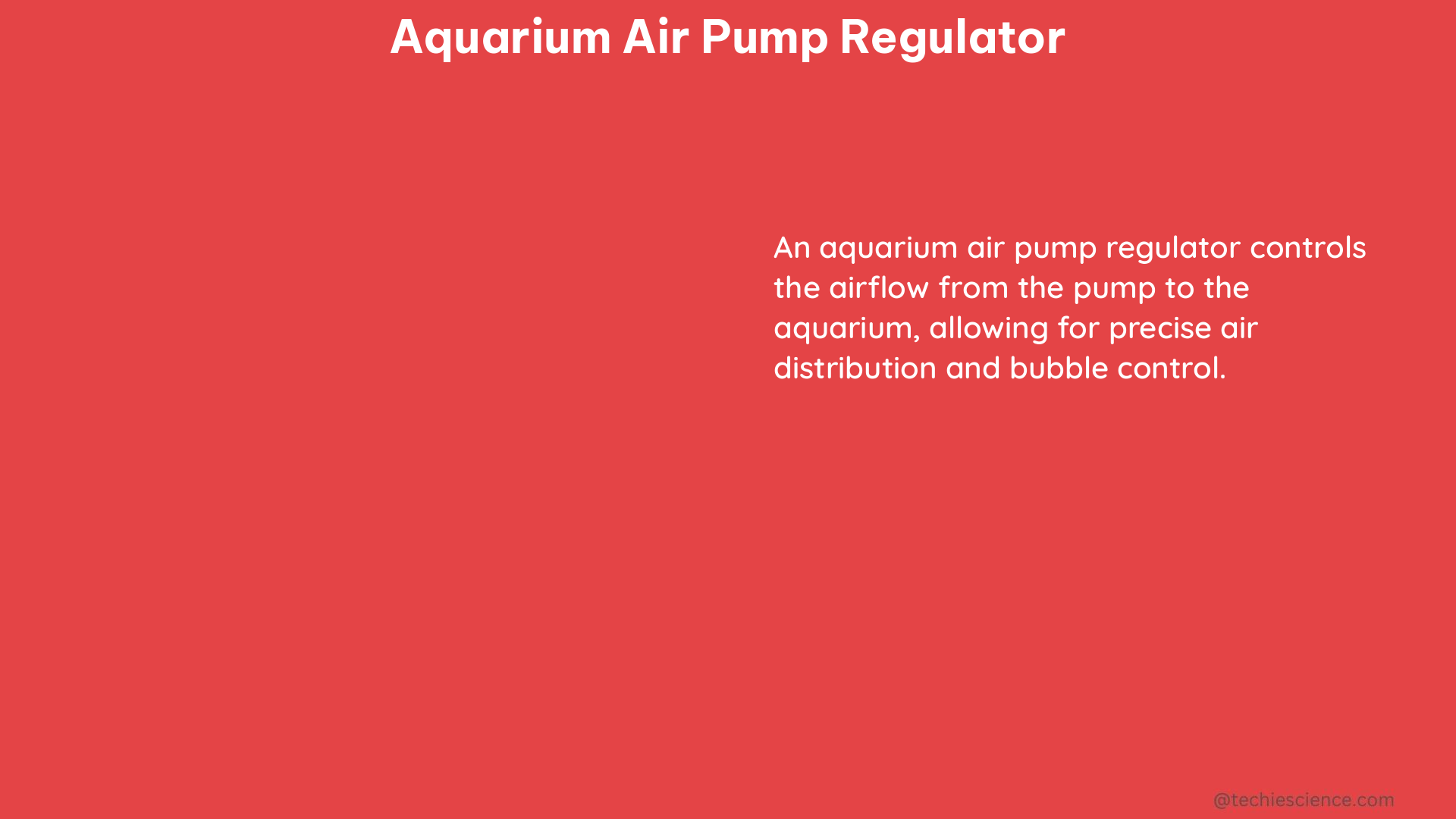An aquarium air pump regulator is a crucial device used to control the air pressure and flow rate in an aquarium air pump system. It is an essential component for maintaining the health and well-being of aquatic life by ensuring the proper oxygenation and circulation of the water. This comprehensive guide will delve into the technical specifications, construction materials, and DIY installation process of aquarium air pump regulators.
Understanding the Technical Specifications
Aquarium air pump regulators are designed to operate within a specific range of air pressure and flow rate to ensure the optimal functioning of aquarium equipment and the overall health of the aquatic ecosystem.
Air Pressure Range
Aquarium air pump regulators can control the air pressure within a range of 0-35 kPa (kilopascals) or 0-0.517 psi (pounds per square inch). This pressure range is crucial for the proper operation of aquarium devices such as filters, bubblers, air stones, and decorations. Maintaining the correct air pressure prevents damage to the air pump or other aquarium equipment.
Flow Rate Range
The flow rate of an aquarium air pump regulator can be adjusted to control the volume of airflow. The flow rate is typically measured in liters per minute (LPM) or gallons per hour (GPH). Aquarium air pump regulators are commonly rated for a flow rate range of 1-10 LPM or 1-2.64 GPH, allowing users to fine-tune the airflow to meet the specific needs of their aquarium setup.
Power Consumption
Aquarium air pump regulators are designed to be energy-efficient, with most models consuming less than 5 watts of power. This low power consumption makes them cost-effective to operate and contributes to the overall sustainability of the aquarium system.
Construction Materials
Aquarium air pump regulators are typically constructed using high-quality materials such as brass, stainless steel, or durable plastics. These materials ensure that the regulator is resistant to corrosion and can withstand the demands of long-term use in a wet environment, such as an aquarium.
Connections
Aquarium air pump regulators commonly feature standard 1/4 inch or 3/16 inch connections for attaching to air pump tubing. Some models may also include additional connections for attaching to other aquarium devices, such as air stones or decorations.
Pressure Relief Valve
Some aquarium air pump regulators are equipped with a pressure relief valve that automatically releases excess pressure if it becomes too high. This safety feature helps prevent damage to the air pump or other aquarium equipment, ensuring the overall stability and longevity of the system.
Flow Control
Many aquarium air pump regulators feature a flow control knob or dial that allows users to precisely adjust the airflow. This feature enables fine-tuning of the air pressure and flow rate to meet the specific requirements of the aquarium setup, ensuring optimal oxygenation and water circulation.
DIY Aquarium Air Pump Regulator

Creating a DIY aquarium air pump regulator can be a cost-effective and customizable solution for aquarium enthusiasts. Here’s a step-by-step guide to building your own regulator:
Materials Needed
- Pressure gauge (rated for 0-35 kPa or 0-0.517 psi)
- Ball valve
- T-connector
- Airline tubing
- Hose clamps
Installation Steps
- Attach the pressure gauge: Connect the pressure gauge to the airline tubing using a hose clamp. Ensure that the gauge is rated for the appropriate pressure range.
- Install the ball valve: Connect the ball valve to the airline tubing using a hose clamp. The ball valve should be installed after the pressure gauge and before the air pump.
- Add the T-connector: Connect the T-connector to the airline tubing after the ball valve. This will allow you to divert airflow to different aquarium devices.
- Connect the air pump: Connect the air pump to the T-connector using a length of airline tubing. Ensure that the connection is secure and there are no leaks.
- Test the regulator: Turn on the air pump and observe the pressure gauge. Adjust the ball valve to control the air pressure and flow rate. Verify that the regulator is working correctly and there are no leaks.
By following these steps, you can create a customized aquarium air pump regulator that meets the specific requirements of your aquarium setup.
References
Aquarium Air Pump Monitoring System – Arduino Forum
Controlling aquarium air pump – Interfacing – Arduino Forum
Check valves – How they Work! – YouTube
Is there a relatively inexpensive way to measure the airflow of an air pump? – Reddit
Check Valves For Aquariums | Tameson.com
